If you’re looking to add some structure to your outdoor space, a retaining wall is an excellent option. Not only do they add visual interest, but they also serve a practical purpose by preventing soil erosion and managing water runoff. However, retaining walls can be costly, which is why finding inexpensive retaining wall ideas is crucial.
I’ve done some research and found some great options for those on a budget. One option is to use stone blocks with small gaps between each layer, creating a visually striking effect and an organic texture.
This DIY option is not only cost-effective but also allows for customization in terms of stone choice and wall height. Another option is to use pressure-treated pine, which is a more affordable wood option that still provides durability and longevity.
With some creativity and planning, you can create a beautiful and functional retaining wall without breaking the bank.
Ultimately, a retaining wall can add value to your property by enhancing the landscape and providing practical benefits. By exploring inexpensive retaining wall ideas, you can achieve this without overspending.
Keep in mind that the materials you choose will affect the cost, so do your research and consider factors such as durability, maintenance, and aesthetic appeal. With these factors in mind, you can create a retaining wall that is not only budget-friendly but also adds value to your property.
Here are 13 inexpensive cheap retaining wall ideas for your garden or patio.
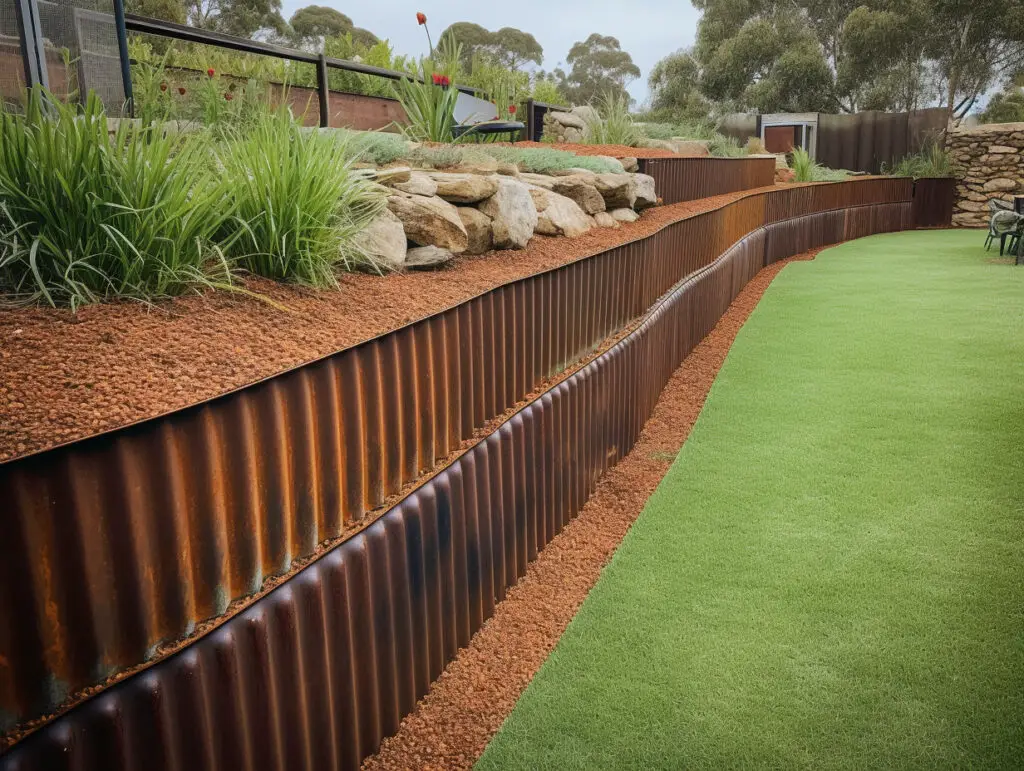
Inexpensive Cheap Retaining Wall Ideas
When it comes to retaining walls, there are many options to choose from, but not all of them are affordable.
In this section, I will share some of the most inexpensive retaining wall ideas that you can use to create a beautiful and functional retaining wall without breaking the bank.
Using Concrete Blocks
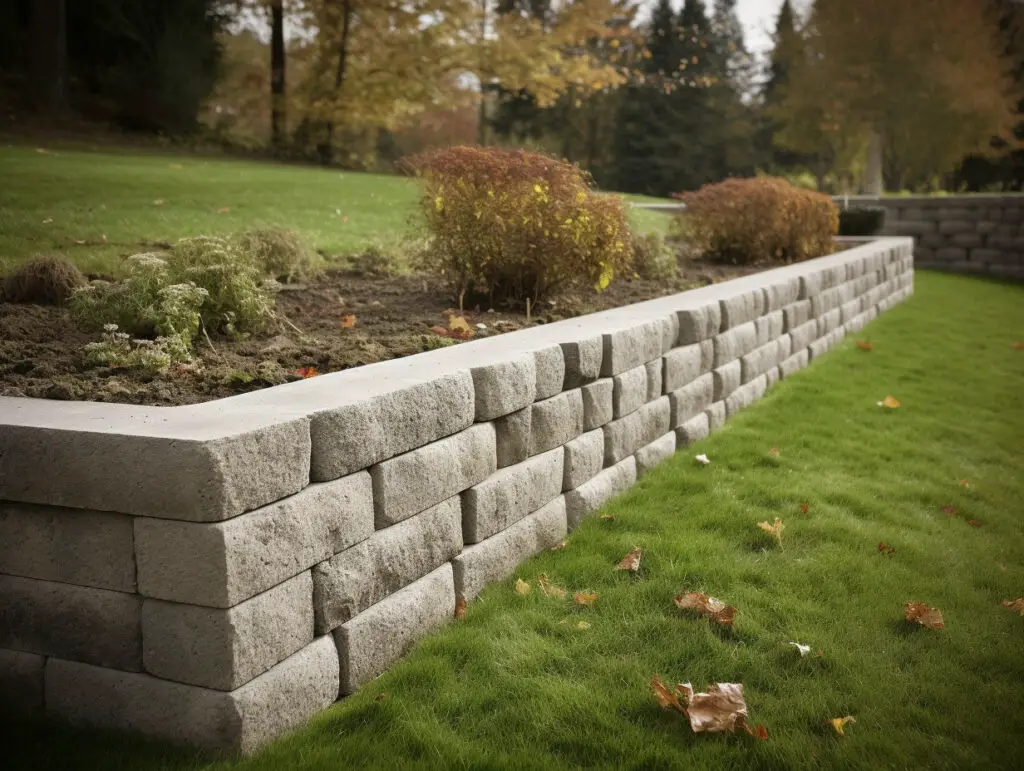
One of the cheapest and easiest ways to build a retaining wall is by using concrete blocks.
These blocks are readily available at most home improvement stores and are relatively easy to install.
They also come in a variety of colors, shapes, and sizes, allowing you to create a retaining wall that is both functional and aesthetically pleasing.
Using Railroad Ties
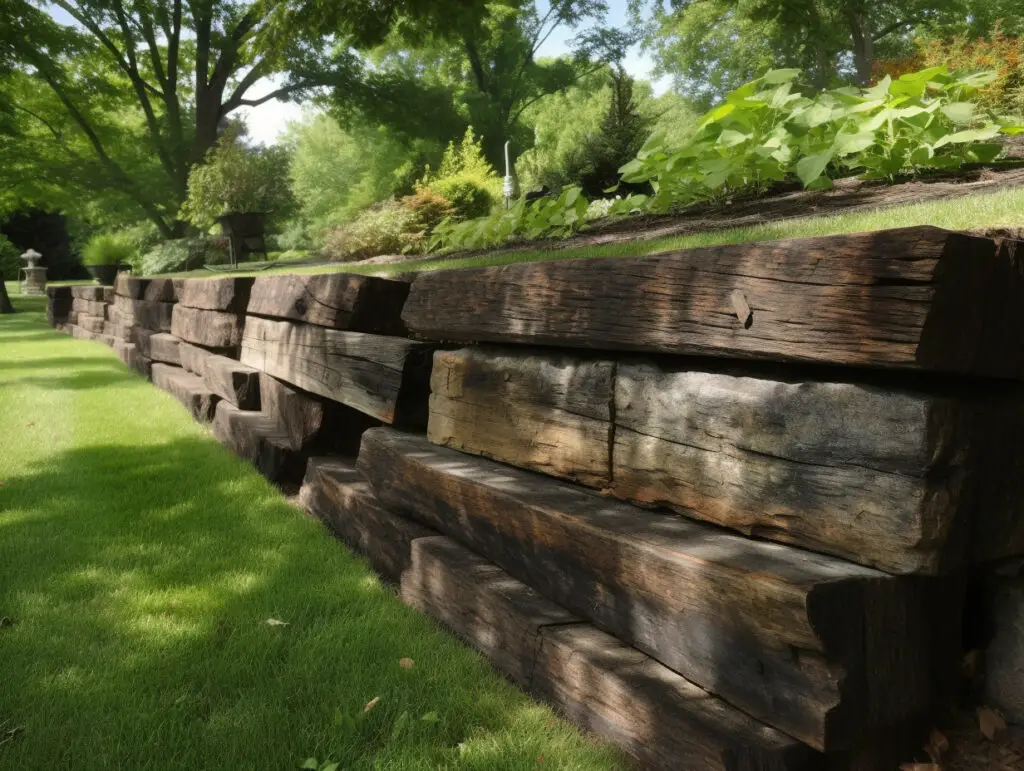
Another affordable option for building a retaining wall is using railroad ties. These are large wooden beams that are often used in railroad construction.
They are sturdy, durable, and relatively inexpensive. Railroad ties can be stacked on top of each other to create a retaining wall that is both functional and visually appealing.
Using Treated Timbers
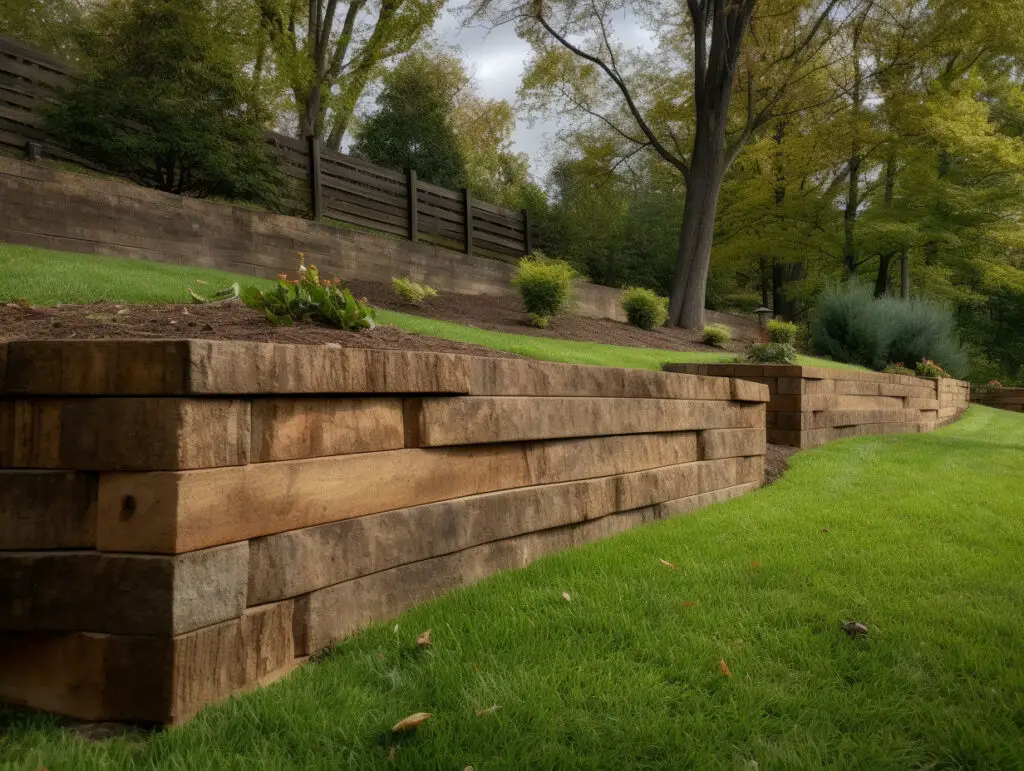
Treated timbers are another affordable option for building a retaining wall. These are wooden beams that have been treated with chemicals to make them resistant to rot, insects, and other forms of damage.
Treated timbers are easy to work with and can be used to create a variety of retaining wall designs.
Using Gabion Baskets
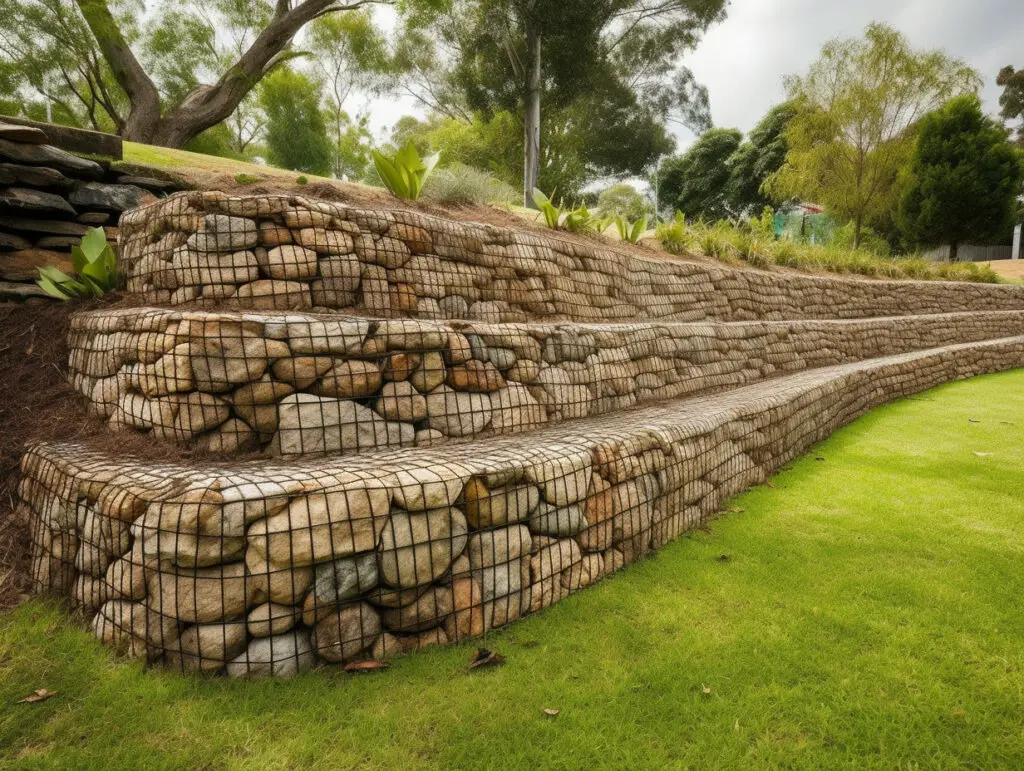
Gabion baskets are wire cages that are filled with rocks, stones, or other materials. They are a popular choice for retaining walls because they are affordable, durable, and easy to install.
Gabion baskets can also be used to create a variety of retaining wall designs, including curved walls and walls with different levels.
Using Log Stack
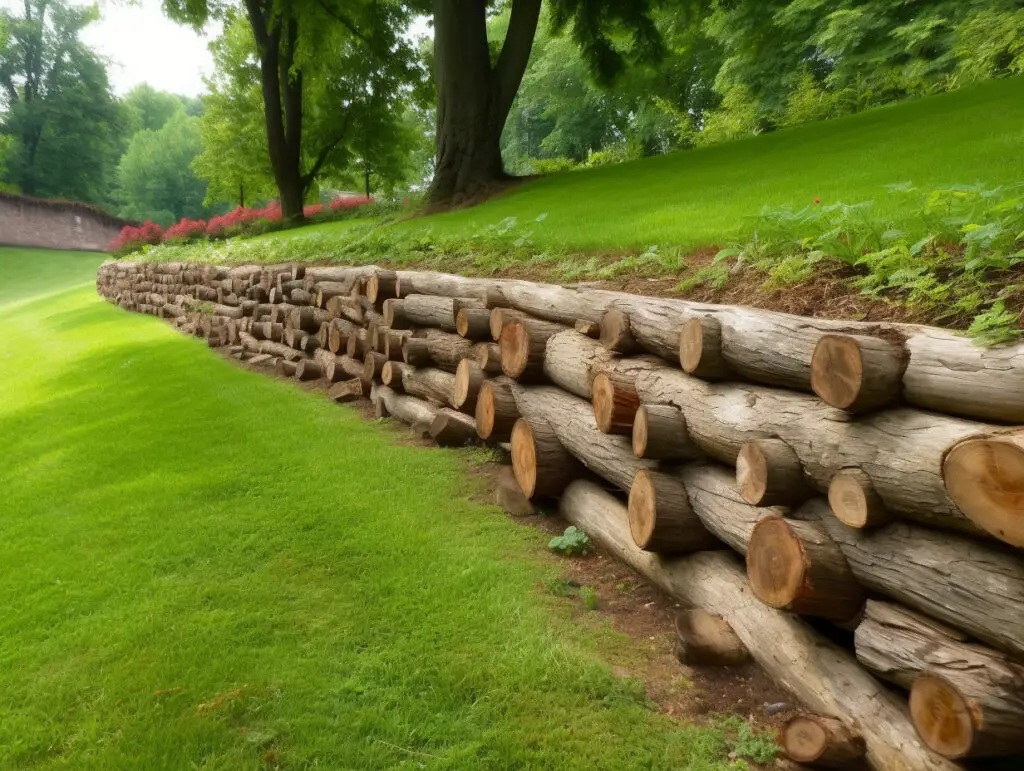
Using logs to build a retaining wall is an affordable and eco-friendly option. It involves stacking logs on top of each other to create a sturdy wall that can hold back soil and other debris. This method is particularly effective for creating a rustic look and feel in your backyard.
Using Recycled Tires
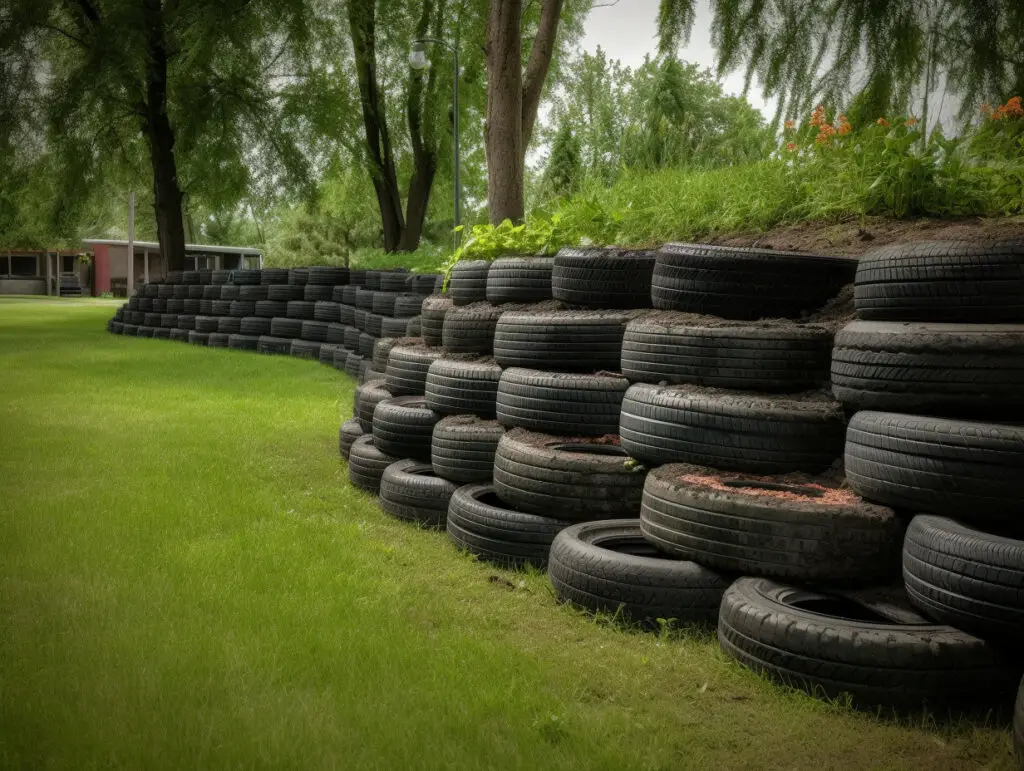
Recycled tires can also be used to create an affordable retaining wall. This method involves stacking tires on top of each other and filling them with soil.
The tires can be painted to match the surrounding landscape, creating a visually appealing retaining wall that is also eco-friendly.
Using Parallel Logs
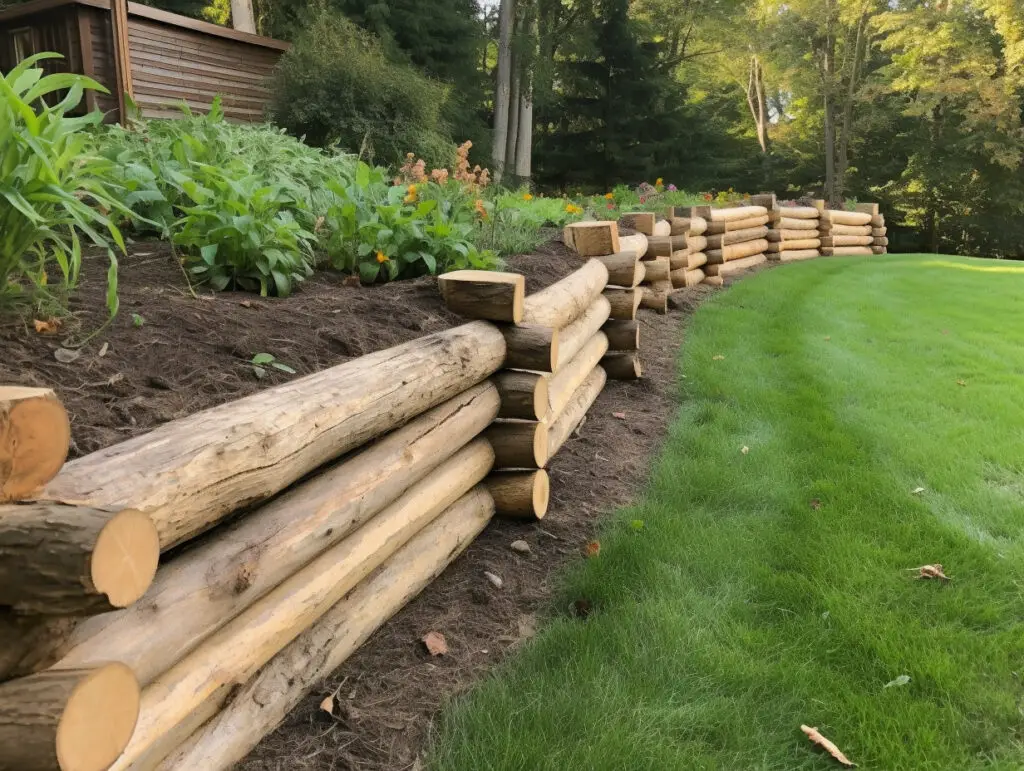
Another option for building an affordable retaining wall is using parallel logs. This method involves stacking logs on top of each other in a parallel pattern.
The logs can be secured together with rebar or other materials to create a sturdy wall that can withstand the pressure of soil and other debris.
Metal Sheets
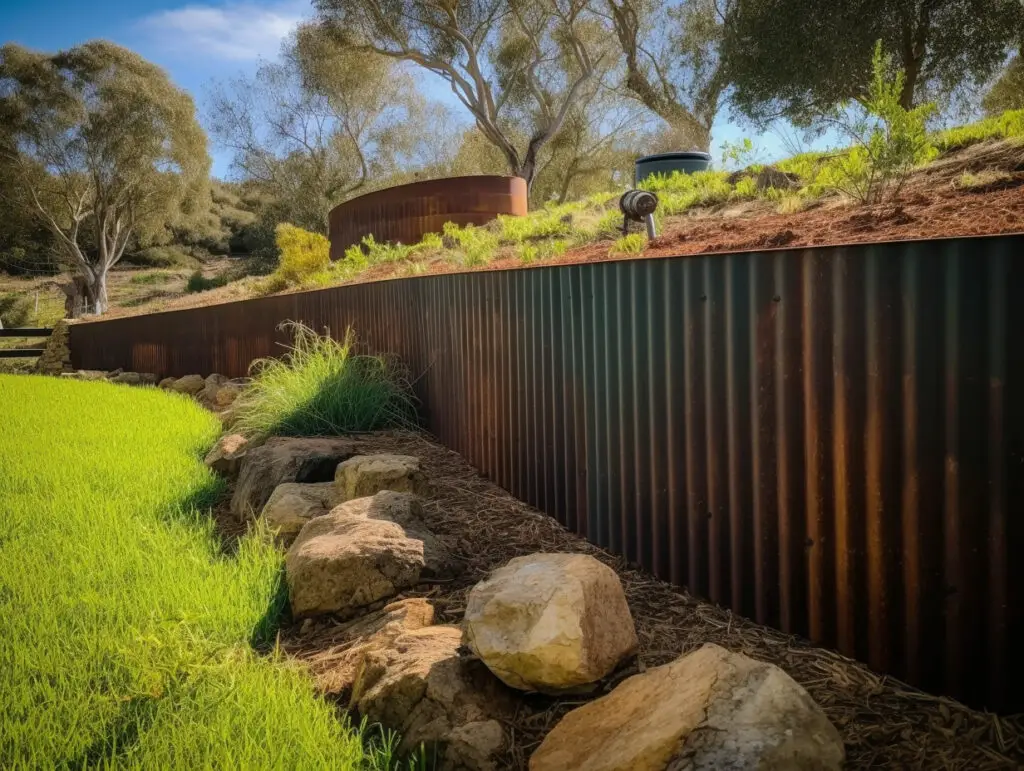
Metal sheets can also be used to create an affordable retaining wall. This method involves cutting sheets of metal to the desired size and shape and securing them together with bolts or other materials. Metal retaining walls are durable and long-lasting, making them a popular choice for commercial and industrial applications.
In conclusion, there are many affordable retaining wall ideas that you can use to create a functional and visually appealing retaining wall in your backyard. From using concrete blocks to recycled tires, there is a solution for every budget and design preference.
Stone Retaining Walls
Stone retaining walls are a great option for those looking for an inexpensive and beautiful way to add structure and dimension to their outdoor space. There are several ways to use natural stone to create a stunning retaining wall.
Using Natural Stone
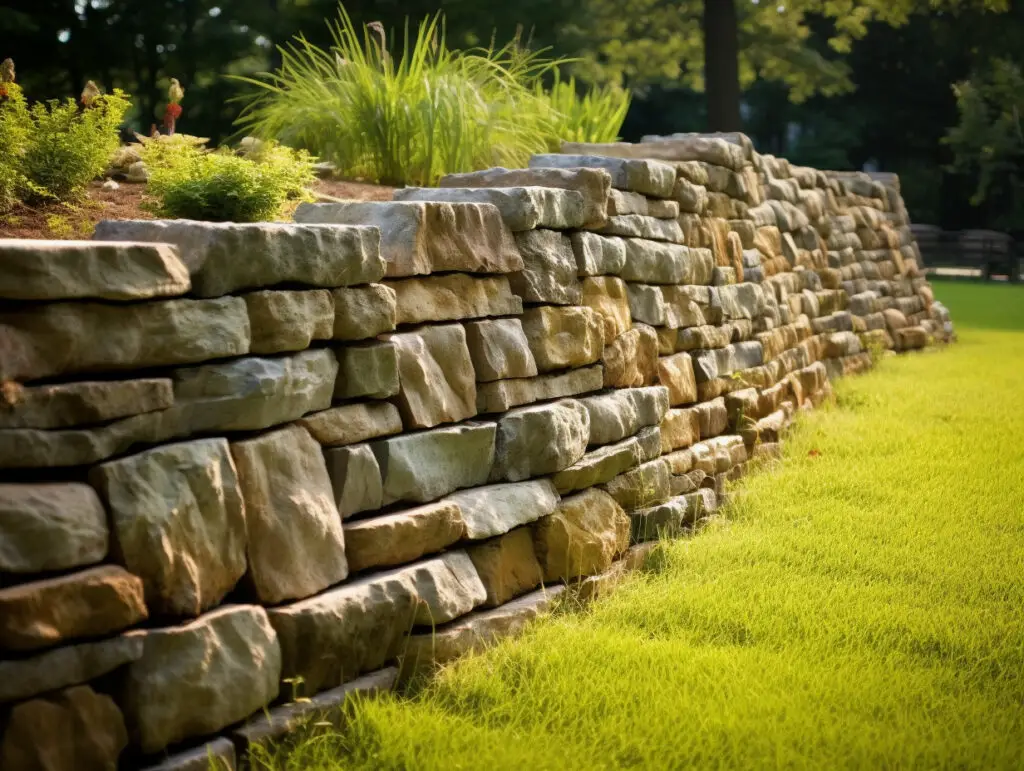
One option is to use natural stone to create a retaining wall. This can be done by stacking large, flat stones on top of each other to create a sturdy wall. Natural stone retaining walls are durable and can last for decades, making them a great investment for your outdoor space.
Using Stacked Stone
Another option is to use stacked stone to create a retaining wall. Stacked stone is a popular choice because it is easy to work with and can be cut to fit any space. Using oversized stone blocks with small gaps between each layer can create a visually-striking effect and an organic texture.
Using Pennsylvania Fieldstone
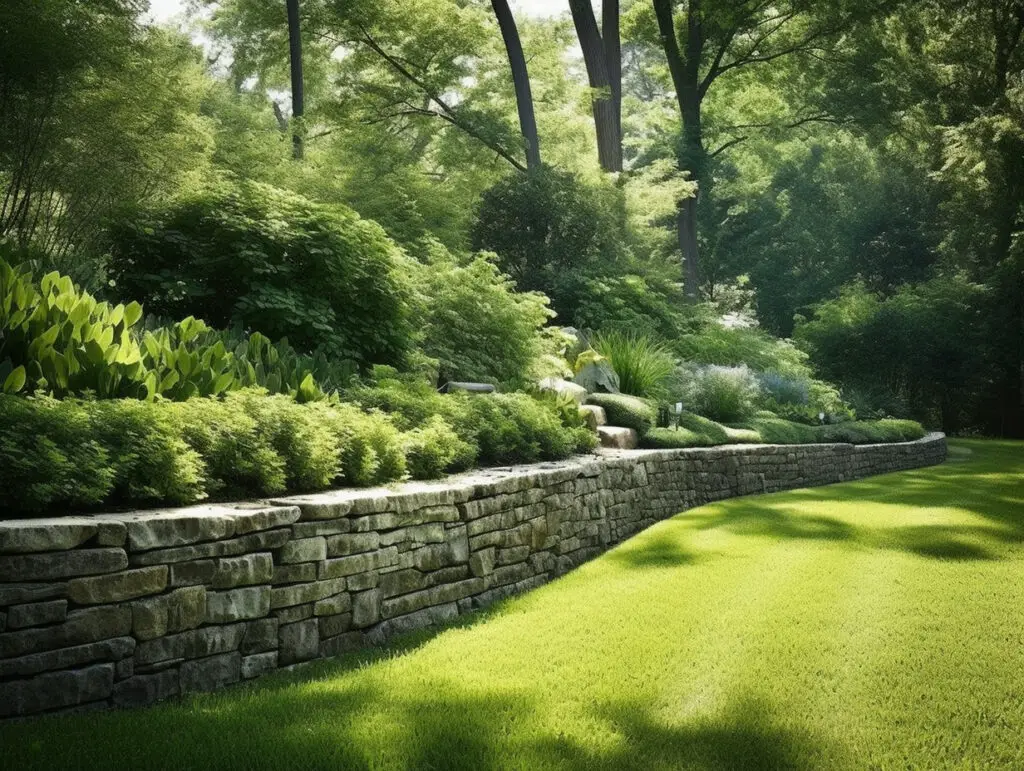
Pennsylvania fieldstone is a natural material that is perfect for creating beautiful retaining walls. It has a unique texture and color that can add character and charm to any outdoor space.
Pennsylvania fieldstone retaining walls are also durable and can withstand harsh weather conditions, making them a great investment for your home.
Boulders
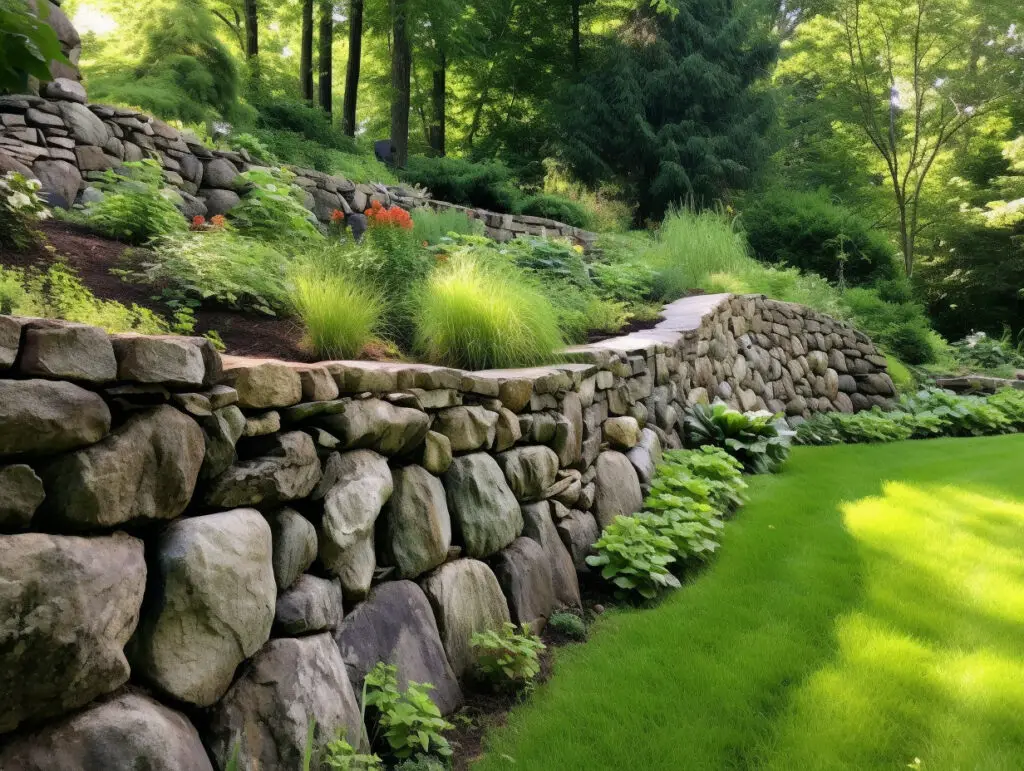
Boulders are another option for creating a retaining wall. They can be stacked to create a sturdy wall that is both functional and beautiful. Boulders come in a variety of sizes and colors, so you can choose the perfect ones to fit your style and space.
In conclusion, stone retaining walls are a beautiful and inexpensive way to add structure and dimension to your outdoor space. Whether you choose to use natural stone, stacked stone, Pennsylvania fieldstone, or boulders, you can create a stunning retaining wall that will last for years to come.
Poured Concrete Walls
As a contractor, I often recommend poured concrete walls for retaining wall projects. They are structurally sound, durable, and can resist cracking and shifting over time. Here are some things to consider when using poured concrete for your retaining wall project.
Using Poured Concrete
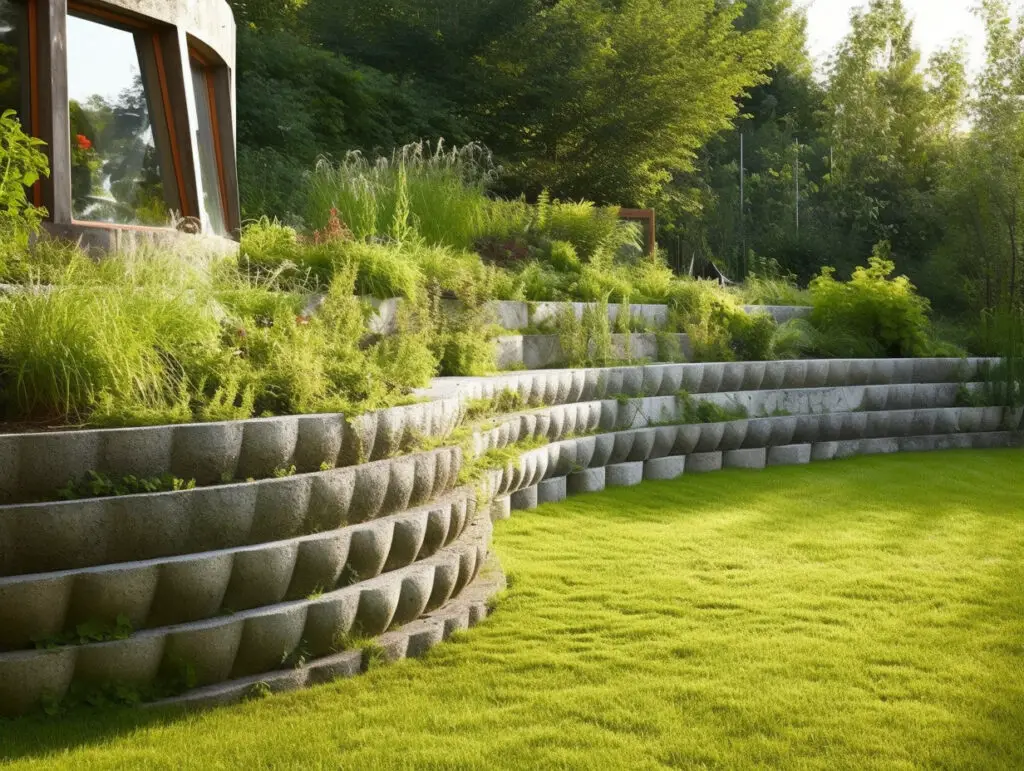
When using poured concrete, it is important to ensure that the foundation is properly prepared.
The soil should be compacted and leveled to prevent settling, which can cause the wall to crack or shift over time. A proper foundation will also help ensure that the wall remains level and straight.
Poured concrete walls can be poured as thin sections or poured in large stock thicknesses, which minimizes soil displacement at installation. This makes them relatively easy to install when compared to other wall materials on the market.
Another benefit of poured concrete is that it can be customized to fit any design or style. You can add color to the mix, stamp the surface of the walls with texture skins, or apply an acid stain or color hardener to create a unique look.
Using Pre-Cast Concrete
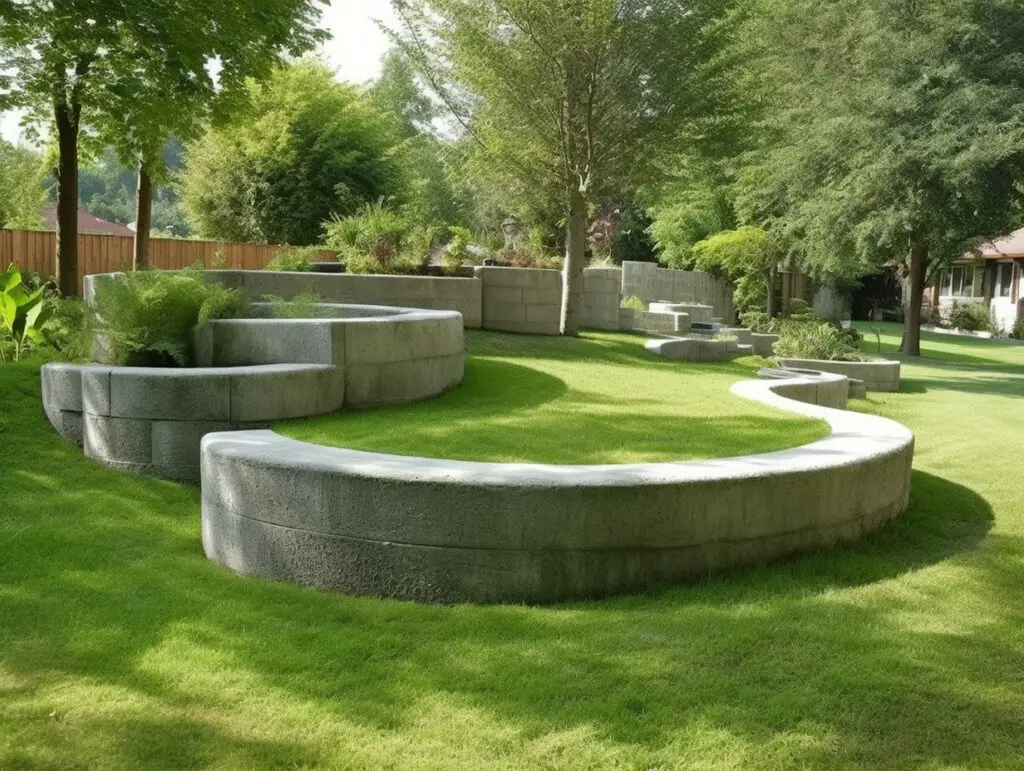
Pre-cast concrete is another option for retaining walls. These walls are made off-site and transported to the project site for installation. They are a good option for projects that require a quick installation or for areas with limited access.
Pre-cast concrete walls are also very durable and can resist cracking and shifting over time. They are available in a variety of sizes and shapes, making them a versatile option for any project.
However, pre-cast concrete walls can be more expensive than poured concrete walls due to the additional cost of transportation and installation.
Poured concrete walls are a great option for retaining walls due to their structural soundness, durability, and customizability.
Pre-cast concrete is also a viable option but may be more expensive. Regardless of which option you choose, proper installation and preparation of the foundation is key to ensuring a long-lasting and structurally sound retaining wall.
Brick Retaining Walls
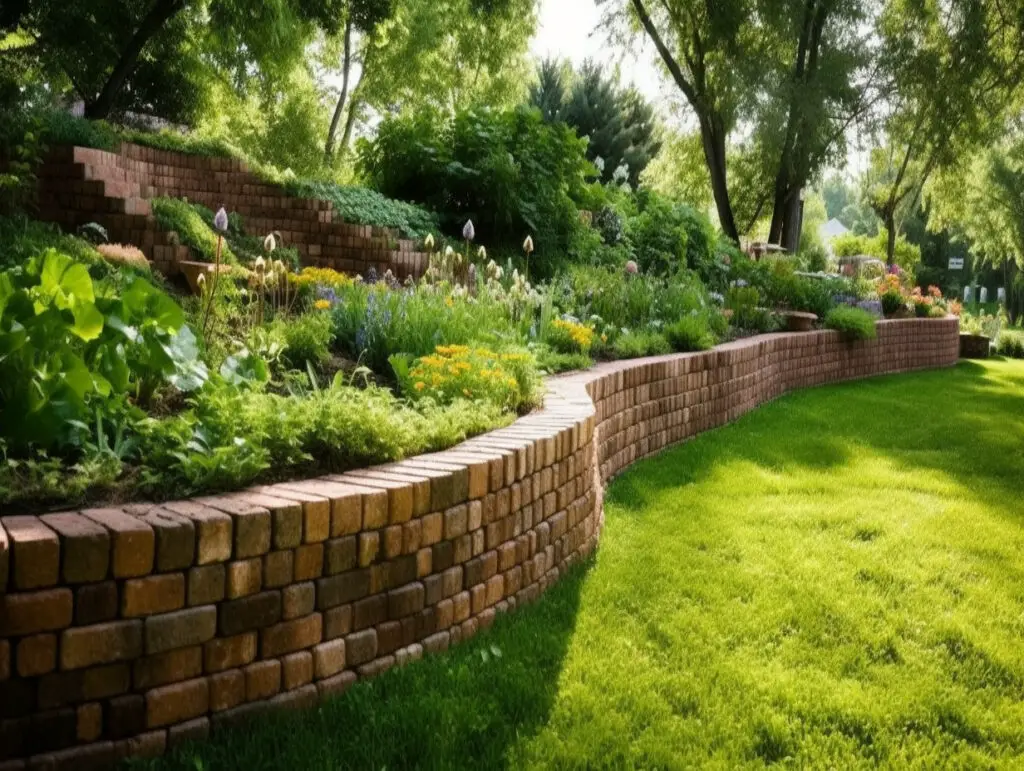
When it comes to retaining walls, brick is a classic and timeless option that can add charm to any landscaping. I have found that brick retaining walls are not only visually appealing but also durable and long-lasting.
One of the main advantages of using bricks for a retaining wall is that they are readily available and affordable. You can easily find bricks at any home improvement store and they come in a variety of colors and sizes to fit your design needs.
Another benefit of brick retaining walls is their versatility. They can be used to create straight or curved walls and can be stacked in different patterns for a unique look. Additionally, bricks can be combined with other materials such as stone or concrete for a more creative and textured appearance.
Brick retaining walls are also relatively easy to install. They require a solid foundation and proper drainage, but once those are in place, the bricks can be stacked and secured with mortar. This makes them a great DIY project for homeowners who want to save money on installation costs.
However, it’s important to note that brick retaining walls may not be suitable for every situation. They are best suited for small to medium-sized walls and may not be strong enough for larger walls or areas with heavy soil pressure. In those cases, it may be necessary to use reinforced concrete or other materials.
Overall, brick retaining walls are a great option for homeowners who want an affordable, durable, and visually appealing solution for their landscaping needs. With their versatility and ease of installation, brick retaining walls can add value and beauty to any property.
Gabion Walls
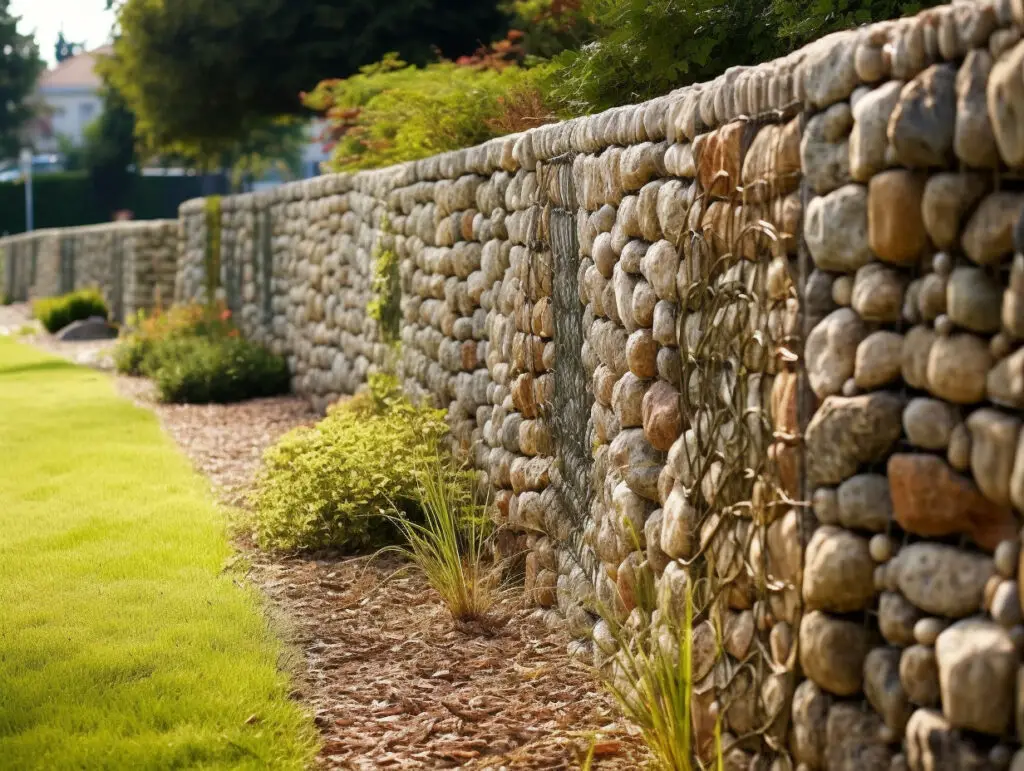
Gabion walls are a great option for those looking for an inexpensive retaining wall idea. They are made of wire cages filled with rocks or other materials and can be used for a variety of purposes, including privacy fences, decorative landscaping, and retaining walls.
I have found that gabion walls are relatively easy to build, and require minimal tools and equipment. They are also very durable and can withstand harsh weather conditions. In addition, they are environmentally friendly, as they are made of natural materials and do not require any chemicals or treatments.
One of the advantages of gabion walls is their versatility. They can be built in a variety of shapes and sizes and can be filled with a range of materials, from rocks and stones to recycled concrete and bricks. This allows for a lot of creativity in terms of design and aesthetics.
Another benefit of gabion walls is their low cost. Compared to other types of retaining walls, such as concrete or brick, gabion walls are significantly less expensive. This makes them a great option for those on a tight budget.
Overall, I highly recommend considering gabion walls as an inexpensive retaining wall option. They are easy to build, versatile, durable, and environmentally friendly.
With a little creativity and some basic tools, you can create a beautiful and functional retaining wall that will last for years to come.
Retaining Wall Design
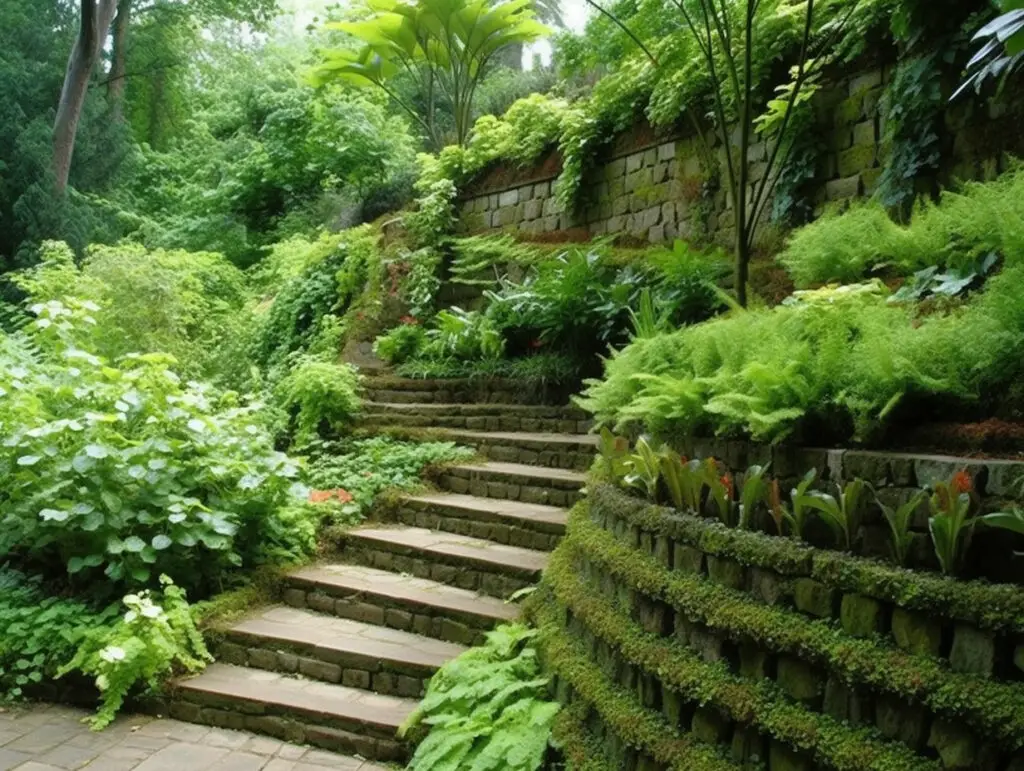
As I was researching inexpensive retaining wall ideas, I realized that the design of the wall is crucial to its functionality and aesthetic appeal.
Here are some considerations for landscape design, steps and levels, terracing, and drainage system that can help you create a beautiful and functional retaining wall for your outdoor space.
Considerations for Landscape Design
When designing a retaining wall, it’s important to consider the overall landscape design of your property. The wall should complement the existing landscape and blend in seamlessly.
You can achieve this by choosing materials and colors that match the surrounding environment. For example, if your property has a lot of natural stone, you can use stone blocks or boulders for your retaining wall.
Steps and Levels
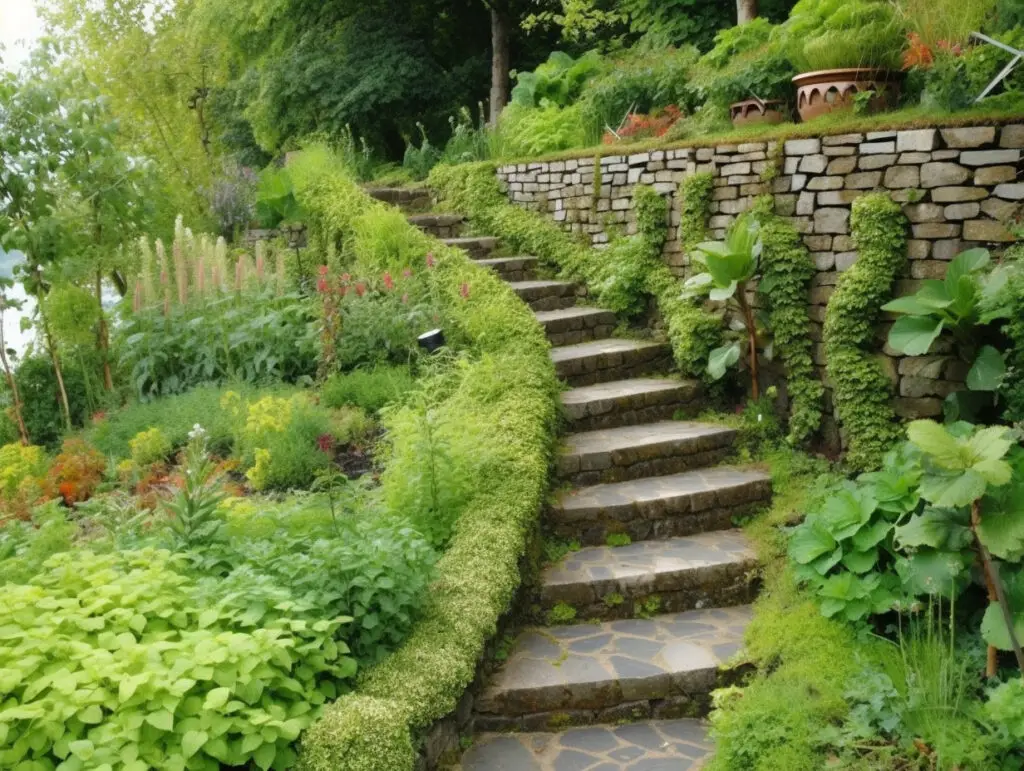
If your property has a steep slope, incorporating steps and levels into your retaining wall design can make it easier to navigate. You can create a series of terraces that follow the natural contours of the land, with each level serving a different purpose. For example, you can have a level for outdoor seating, a level for a garden, and a level for a play area.
Terracing
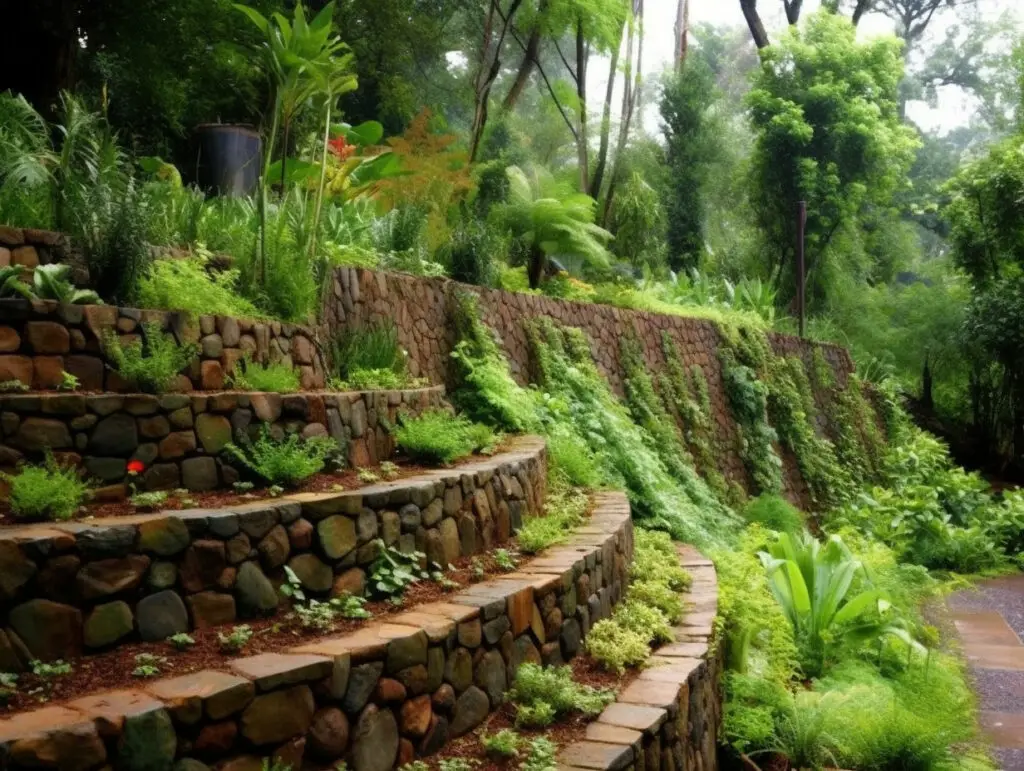
Terracing is another design element that can make your retaining wall more functional and visually appealing. By creating multiple levels, you can maximize the use of your outdoor space and create a more interesting landscape.
Terracing also helps to prevent erosion by slowing down the flow of water and preventing soil from washing away.
Drainage System
One of the most important considerations when designing a retaining wall is the drainage system. Without proper drainage, water can build up behind the wall and cause it to fail.
To prevent this, you should install a drainage system that allows water to flow freely through the wall and away from your property. This can be achieved by using drainage pipes, gravel, and filter fabric.
When designing an inexpensive retaining wall, it’s important to consider the landscape design, steps and levels, terracing, and drainage system. By taking these factors into account, you can create a functional and visually appealing retaining wall that will enhance your outdoor space.
DIY Retaining Wall Construction
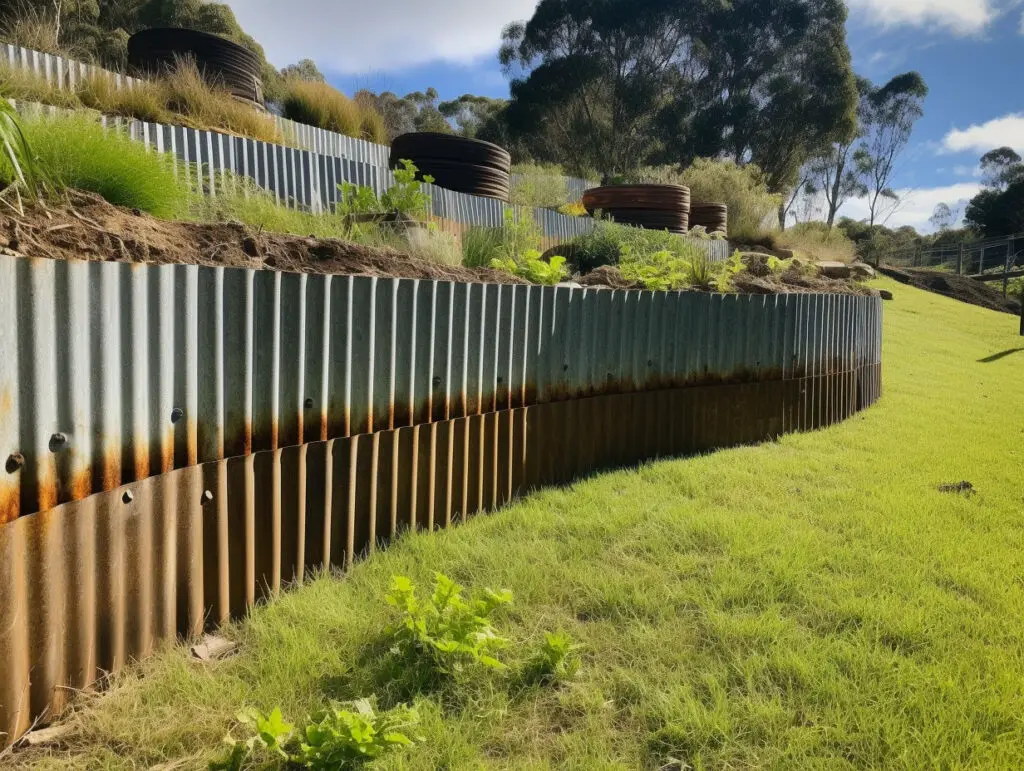
As someone who has built their own retaining wall, I can attest that it is a rewarding and cost-effective DIY project. However, it does require proper construction techniques and labor costs that should be taken into account before starting the project.
Proper Construction Techniques
When constructing a retaining wall, it is important to follow proper construction techniques to ensure its stability and longevity. Here are some key steps to follow:
- Start by excavating the area where the wall will be built. The depth of the excavation will depend on the height of the wall.
- Install a base layer of crushed stone or gravel to provide drainage and stability.
- Use a level to ensure the first row of blocks is level. This will set the foundation for the rest of the wall.
- Install geogrid or a similar material behind the wall to provide additional stability.
- Backfill the area behind the wall with gravel or crushed stone to provide drainage and prevent water from building up behind the wall.
- Install drainage pipes at the base of the wall to prevent water from accumulating and causing damage to the wall.
Labor Costs
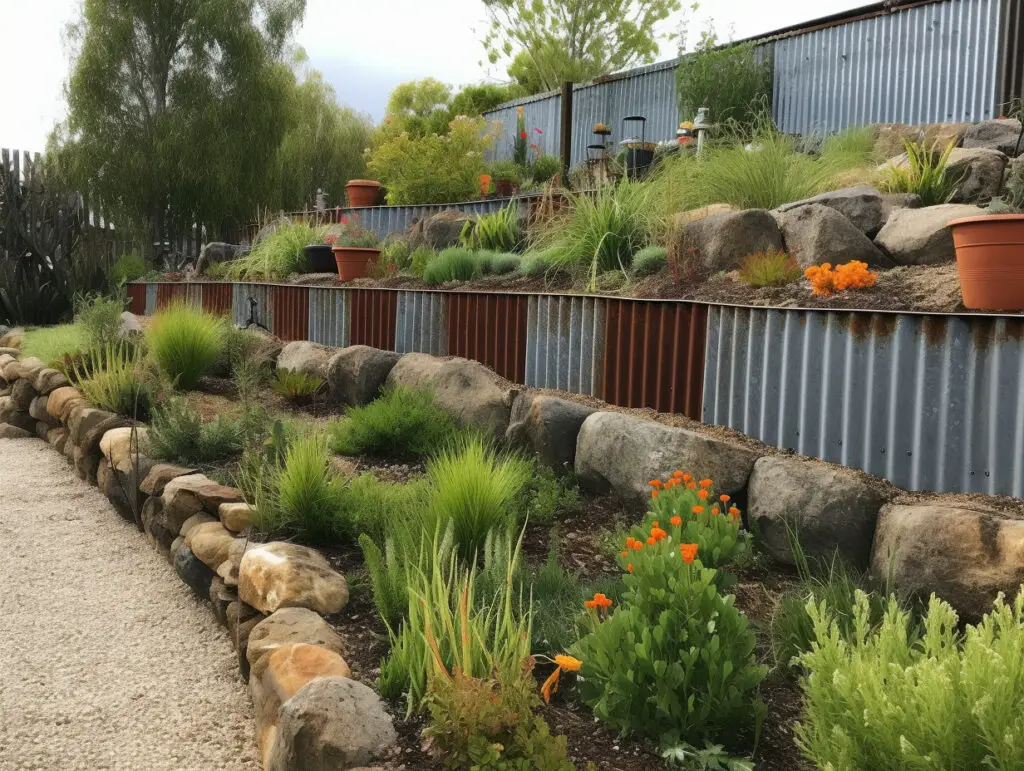
While building a retaining wall yourself can save money on labor costs, there are still some expenses to consider. Here are some factors to keep in mind:
- The cost of materials will vary depending on the type of blocks or stones used, as well as the size of the wall.
- Excavation equipment may need to be rented, which can add to the overall cost.
- The time and effort required to build a retaining wall can be significant, especially for larger walls. It is important to factor in the cost of your time and any additional help you may need.
Overall, building a retaining wall yourself can be a cost-effective way to add value to your property. By following proper construction techniques and considering labor costs, you can ensure that your wall is built to last.
Retaining Walls for Specific Purposes
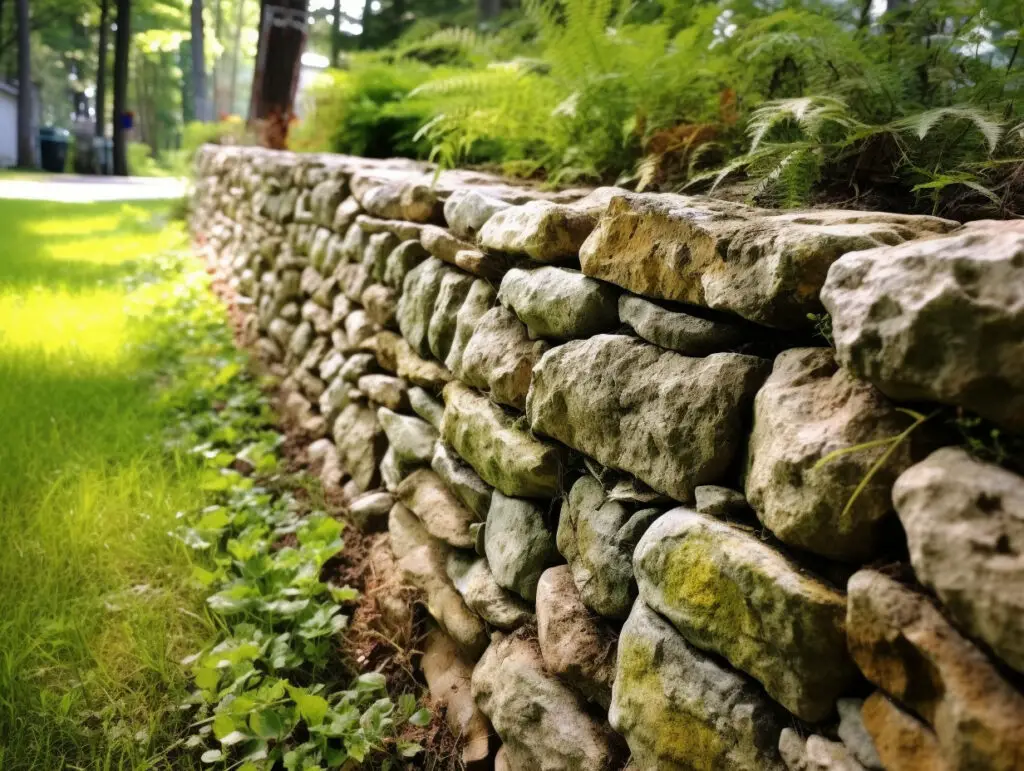
Retaining walls are not only functional but can also be used to enhance the beauty of your outdoor space. They can be designed to serve specific purposes such as creating raised garden beds, flower beds, pathways and sidewalks, and entertaining spaces.
Raised Garden Beds
If you are looking to create a garden in your backyard, a retaining wall can be a great way to create a raised garden bed. This will not only add visual interest but also make it easier to maintain your garden.
You can use a variety of materials such as stone, brick, or wood to create the retaining wall. For a more natural look, you can use rocks and boulders to create a rustic garden bed.
Flower Beds
Retaining walls can also be used to create flower beds. This is a great way to add color and texture to your outdoor space. You can use a variety of plants such as perennials, annuals, and shrubs to create a beautiful flower bed. You can also add decorative elements such as rocks and mulch to enhance the beauty of your flower bed.
Pathways and Sidewalks
Retaining walls can also be used to create pathways and sidewalks in your outdoor space. This is a great way to add functionality and visual interest to your space. You can use a variety of materials such as pavers, bricks, or stones to create the pathway or sidewalk. You can also add decorative elements such as plants and lighting to enhance the beauty of your pathway or sidewalk.
Entertaining Spaces
Retaining walls can also be used to create entertaining spaces in your outdoor space. This is a great way to create a space where you can entertain guests or spend time with your family.
You can use a variety of materials such as stone, brick, or wood to create the retaining wall. You can also add decorative elements such as plants, lighting, and furniture to enhance the beauty of your entertaining space.
In conclusion, retaining walls can be used to serve a variety of purposes in your outdoor space. Whether you are looking to create a raised garden bed, flower bed, pathway or sidewalk, or entertaining space, a retaining wall can be a great way to enhance the functionality and beauty of your outdoor space.
Dealing with Sloped Backyards
As someone who has dealt with a sloped backyard, I know firsthand how difficult it can be to manage soil erosion and flooding.
Here are some inexpensive retaining wall ideas that can help you deal with these issues:
Soil Erosion
One of the biggest challenges of a sloped backyard is soil erosion. When it rains or snows, water can wash away soil, leaving your yard barren and unattractive. Here are some ways to prevent soil erosion:
- Plant ground cover: Ground cover plants like creeping thyme, moss, or clover can help hold soil in place and prevent erosion.
- Install a retaining wall: A retaining wall can help prevent soil from washing away by holding it in place. You can use inexpensive materials like concrete blocks, railroad ties, or even stacked stones to build a retaining wall that is both functional and attractive.
- Create a rain garden: A rain garden is a low-lying area in your yard that is designed to collect and absorb rainwater. By directing water to a rain garden, you can prevent soil erosion and help recharge groundwater supplies.
Flooding
Another issue that can arise with a sloped backyard is flooding. When water doesn’t have anywhere to go, it can pool in low-lying areas of your yard, causing damage to your property and potentially even your home. Here are some ways to prevent flooding:
- Install a French drain: A French drain is a trench filled with gravel or rock that is designed to redirect water away from your home and yard. By installing a French drain at the bottom of your sloped backyard, you can prevent water from pooling and causing damage.
- Create a dry creek bed: A dry creek bed is a decorative feature that can also help prevent flooding. By creating a shallow trench in your yard and filling it with rocks or gravel, you can create a path for water to follow that will prevent it from pooling in low-lying areas.
- Install a rain barrel: By collecting rainwater in a rain barrel, you can prevent it from pooling in your yard and causing flooding. Plus, you can use the collected water to water your plants and garden.
Dealing with a sloped backyard can be challenging, but with the right retaining wall ideas, you can prevent soil erosion and flooding while also creating an attractive outdoor space.
Conclusion
Inexpensive retaining walls can be a great way to add structure and beauty to your outdoor space without breaking the bank. As I’ve explored in this article, there are many different materials and designs to choose from, each with its own strengths and weaknesses.
As a landscape contractor, I often recommend using wood or concrete blocks for retaining walls, as they are both affordable and easy to work with. Stone blocks can also be a great option for those who want a more natural look, but they can be more expensive.
When it comes to design, it’s important to consider both the aesthetic and functional aspects of your retaining wall. A good retaining wall should not only look great but also provide the necessary support and drainage to prevent erosion and other damage.
There are many different options to choose from when it comes to inexpensive retaining walls. By doing your research and working with a qualified contractor, you can create a beautiful and functional outdoor space that will last for years to come.

![What Gravel To Use For Patio Base [Best Options]](https://www.cleverpatio.com/wp-content/uploads/2021/11/What-Gravel-To-Use-For-Patio-Base-270x180.jpg)
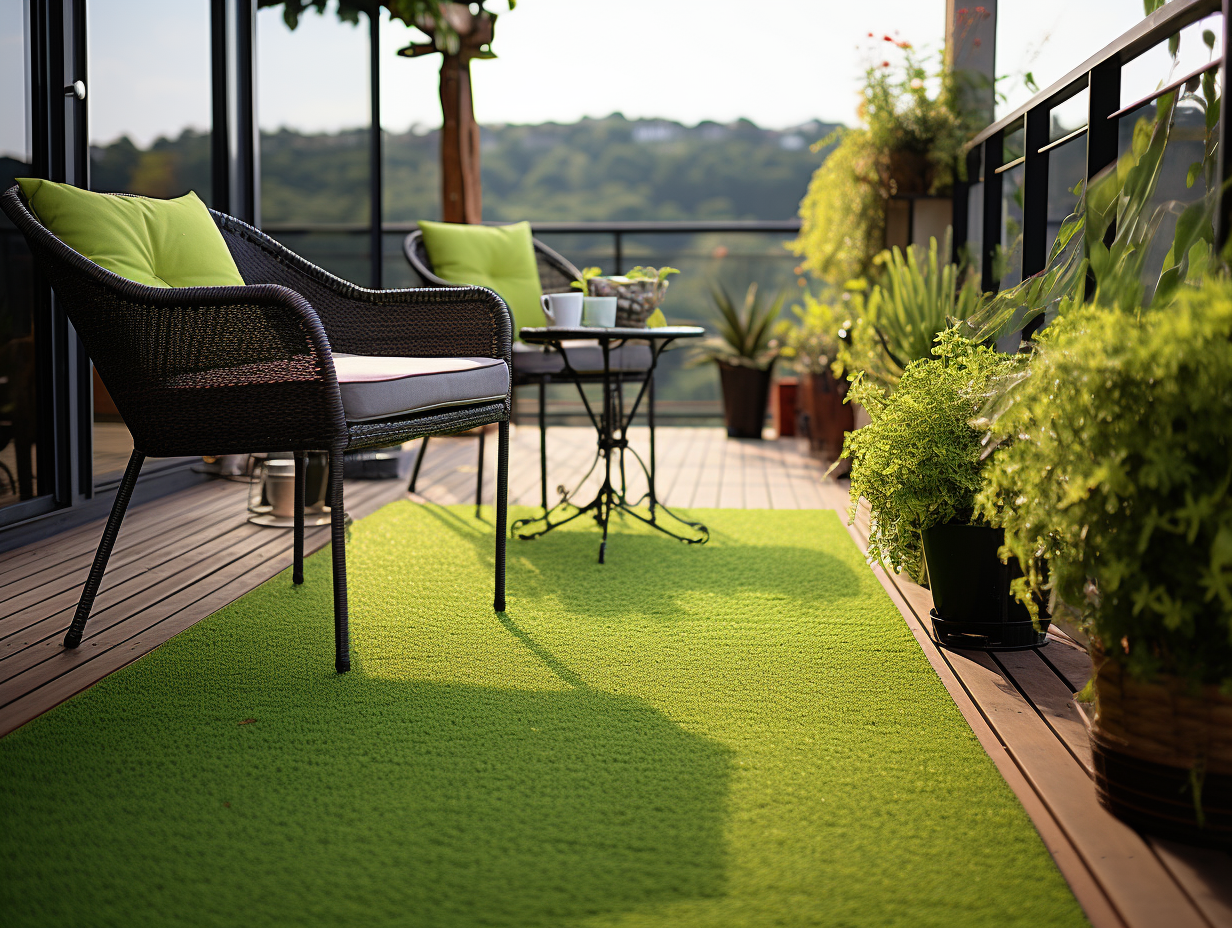
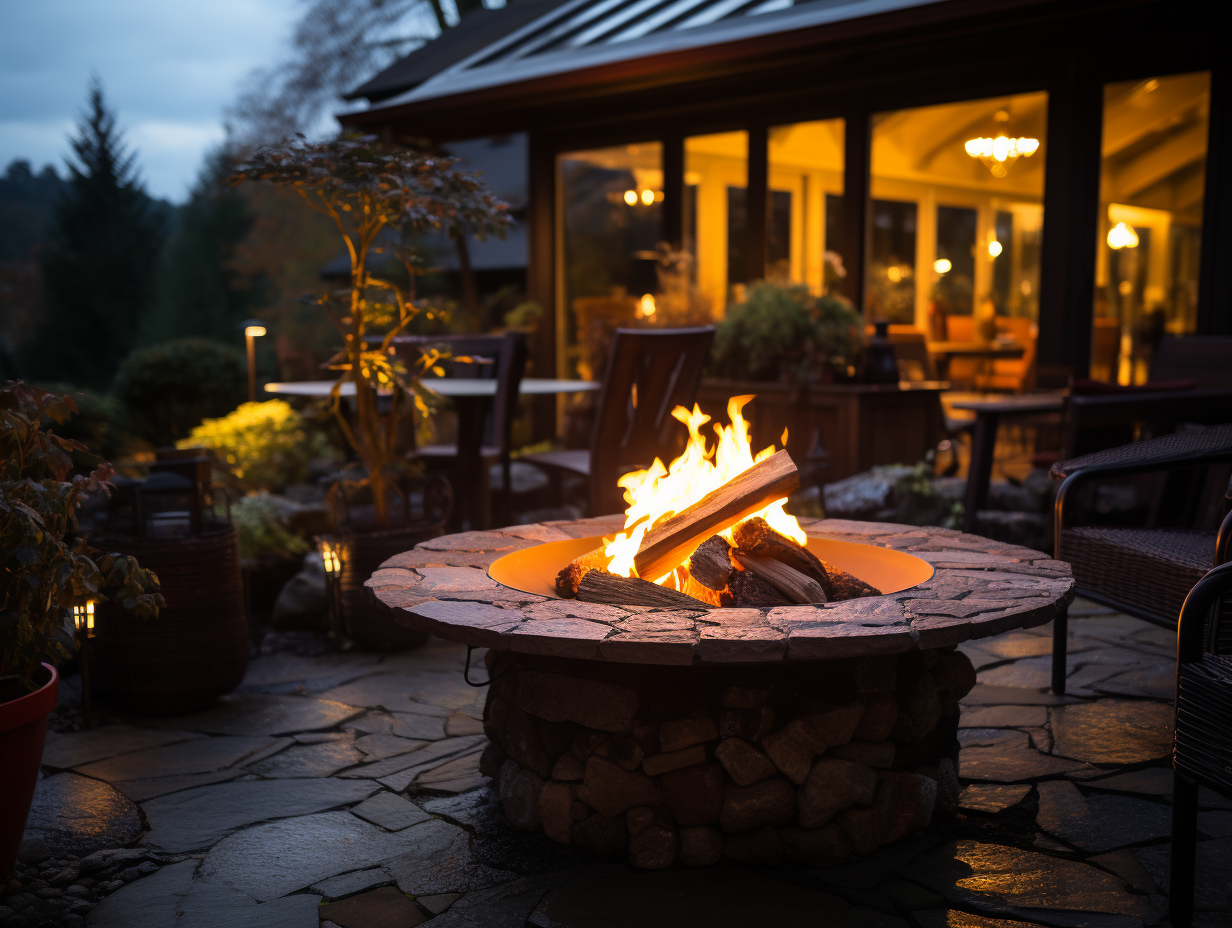
Leave a Reply